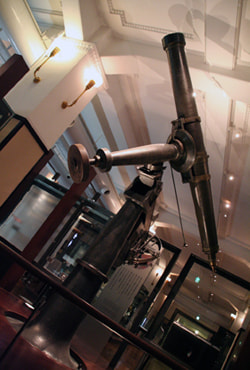
Ikemoto : This is a floor of "Techniques in Observing Nature." The exhibition explains how Japanese had observed a variety of natural phenomena in Japan. There are four sections; Sky, Earth, Time, and Microscopic World. The history of observing natural phenomena in the four fields - astronomy, earthquake, passage of time, and microscopic world - using various techniques, and the progress of technologies that has led to the present national commitment to science and technology are explained through the exhibits.
First of all, let me introduce the section of "Sky." This is the first symbolic exhibit in the section of "Sky," which is called Troughton Astronomical Telescope that was imported from England in 1880. This 20cm equatorial refracting telescope was adopted because it was necessary for the newly established Meiji Government to conduct astronomical observation using the advanced Western technology. The telescope is now designated as an important cultural property.(continued in the right column)
Let's look at the exhibition regarding the history of astronomy. This is called "Tenmon Seisho-zu," a celestial map created by Harumi/Shunkai Shibukawa, who was the first astronomical member of the personal in the Edo shogunate government. In the early Edo Period, astronomy was imported from China, which was used as it was. However, in order to establish Japan's own astronomy, the first official astronomer Shibukawa added stars observed by him to a Chinese celestial map. On this "Tenmon Seisho-zu," these red points were newly added by Shibukawa. It can be said that this map is the origin of Japan's own astronomy.(continued in the lower left column)
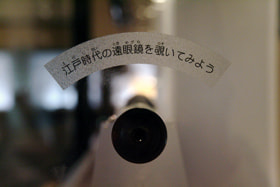
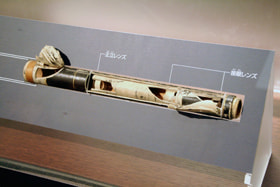
Visitors can look through a telescope from the Edo Period. Its structure is also explained.
This is the exhibition regarding "Japanese Calendar." Japan's astronomy had developed as practical science for making calendars not as observational astronomy. So, in the Edo Period, the creation of calendars was an important task for the shogunate. Japan's astronomy as practical science had focused on the making of calendars. As a result, remarkably detailed calendars that were rare in the world had been created. The reason why the shogunate devoted effort to creating calendars is that the shogunate had enhanced its authority by the calendars, implying "the shogunate could properly make calendars that were not understood by common people." In this way, the shogunate monopolized the creation of calendars, and reformed calendars repeatedly making more accurate calendars.
Calendars at that time made use of phases of the moon to calculate the number of days, and, based on the movement of the sun, defined changes of the seasons.(continued in the right column)
This type of calendar is called "lunisolar calendar," of which creation discontinued after the solar calendar was adopted in the Meiji Period.
In the Edo Period, it was very important for educated people to understand movements of stars, and calendars, which was considered as an important culture. Therefore, they studied them in a variety of private schools and feudal domain schools, where these celestial globes were used as learning materials. These terrestrial globe and celestial globe were created by Shibukawa, the first official astronomer of the Edo shogunate, who was just mentioned before. The original globes are designated as important cultural properties, and can not be exhibited permanently here, so these are replicas.(continued in the lower left column)
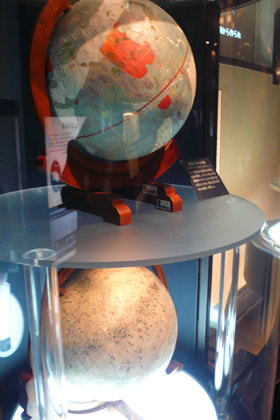
Old globes and Celestial Globes
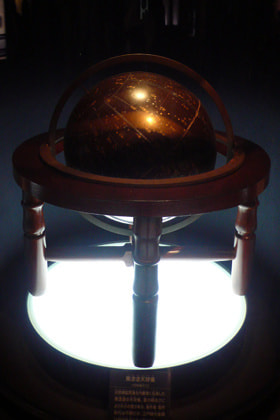
Here is the section of "Learning about the earth." In the Meiji Period, many foreigners hired by the Japanese government visited Japan. Researchers in the field of physical geography were included among them. Earthquakes in Japan were astonishing natural phenomena for the researchers.
As a matter of course, they tried to record shaking of the ground by their science technology as a scientist. So it can be said that seismology started in Japan.(continued in the next page)
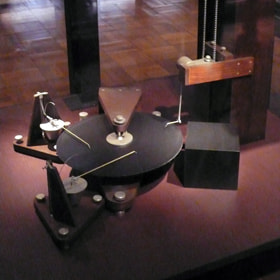
This is a model of "Ewing's seismometer." Based on seismometers like this, Japanese invented the "Omori seismometer."













